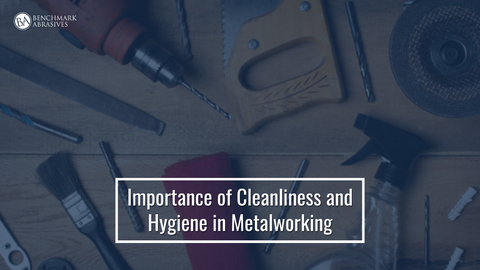
Importance Of Cleanliness And Hygiene In Metalworking

Rocks in the Earth's crust contain natural chemical components called heavy metals. The usage of heavy metals in industry and society dates back a long time. Despite their natural origins, they are not health-friendly for people and can result in both short-term and long-term health problems. The concentration of heavy metals in the body rises with time, becoming more hazardous. Because exposure occurs over an extended period, it is common to misdiagnose a medical problem that is getting worse initially. This is a result of exposure to heavy metal dust.
Heavy metals can enter the body through dust inhalation, food consumption, and even skin penetration. Workers wearing contaminated clothing or shoes may carry heavy metals home, exposing family members. Weakness, anemia, neurological system damage, kidney and brain damage, and other symptoms are typical of overexposure to heavy metal dust. Heavy metal poisoning is lethal at high concentrations.
Mercury, cadmium, and lead are the heavy metals most significant in professional and personal situations. Heavy metals from smelters or junkyards that handle recycled metals contaminate soils.
1. MERCURY
Mining, production, handling, extraction, and refinement of gold and silver ores are all sources of mercury exposure. Consumer goods contain mercury, including fluorescent light bulbs, electrical equipment, and dental amalgam fillings. Mercury was once present in older thermometers, but these are gradually phased out in favor of digital thermometers without mercury.
2. CADMIUM
The element cadmium is particularly hazardous. In addition to the consequences mentioned above, it is a carcinogen connected to pancreatic cancer. Cadmium use has significantly decreased due to its high toxicity. Rechargeable batteries (NiCd) contain cadmium, soldering agents, corrosion inhibitors, electrical devices, and dye pigments. In industrial settings where ore is treated or melted, cadmium is also present.
3. LEAD
One of the most common overexposures is lead exposure at work. Examples of industries with potentially significant directions include smelter activities, battery manufacture and maintenance, and firing ranges. Today, lead-free paint and petrol are available in North America and many other nations.
Lead exposure for children is mostly caused by lead paint on the walls of older homes and buildings. This is notwithstanding the 1978 prohibition. Lead from paint contaminates soil and household dust in some neighborhoods and residences. Lead can also leak into drinking water from aged lead pipes and lead-based solder.
HOW TO PROTECT YOURSELF WHEN WORKING WITH METALS
Good hygiene habits greatly aid heavy metal exposure prevention. Proper hand hygiene is critical to preventing lead pollution from entering the body. High-risk behaviors include eating, drinking, smoking, sneezing, and touching the face with dirty, unclean hands. Wearing personal protective equipment is also crucial. This covers workwear that is routinely laundered and never worn outside of the office, as well as gloves and respirators when necessary.
Implementing a thorough skincare routine is crucial. Before beginning work, using a pre-work solution helps protect the skin from job-related allergens and metal dust while also making removing metal dust from hands easier.
Wash your hands thoroughly to eliminate heavy metal pollution from your hands as part of a skin care regimen.
To clean your skin, avoid industrial cleaners or chemicals. When cleansing your skin, avoid using a brush or pumice stone. The ideal way to wash your skin is with cold to tepid water; the skin suffers more from hot water. Use solvent-free hand cleaners and refrain from cleaning pastes that contain pumice to ensure the ingredients are gentle on the skin.
The usage of Scrubnutz industrial hand cleaner with natural scrubbers for extra-heavy-duty contamination, was shown to help remove lead from the hands in qualitative testing. Special lead-eliminating cleansers sold commercially did not outperform the cleaner in terms of quality. The use of personal protection equipment when handling products containing heavy metals and safe and sanitary work practices cannot be substituted by just washing your hands.
Although heavy duty cleaning wipes for textiles is practical, there is always a chance of recontamination. Additionally, skin that needs to be adequately cleaned may still be contaminated with lead. So the preferred cleaning method is with water and a hand cleaner.
Make sure to wash your hands completely, including the forearms and fingernails. Remember to wash your face with liquid soap that has been approved. Avoid splashing water to prevent heavy metal contamination of sink areas. Use disposable paper towels to dry hands after rinsing them for at least 30 seconds.
Apply an after-work cream to moisturize hands and help the skin regain its natural barrier function.
Unseen contaminants are sometimes the greatest risk to employees. A thorough skin care plan can keep employees healthy for years.



































































